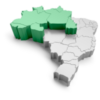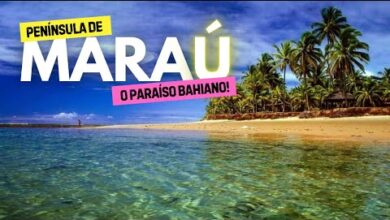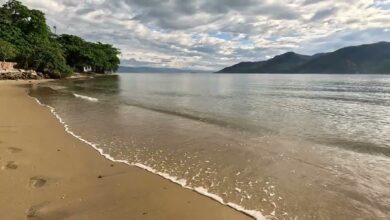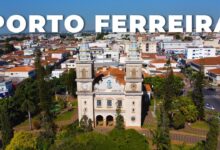
Tramandaí RS .. Capital of the beaches .. Rio Grande do Sul .. Brazil .. Live
Tramandaí RS .. Capital of the beaches .. Rio Grande do Sul .. Brazil .. Live Tramandaí is a Brazilian municipality of the state of Rio Grande do Sul. It is a beach town of the north coast of Rio Grande do Sul, which is located 118 km from the state capital, Porto Alegre. Very frequented by gauchos from the Vale dos Sinos and Metropolitan Region of Porto Alegre. It has been widely visited by tourists from Uruguay and Argentina in previous years. The beach has good tourist infrastructure, in summer the population can reach 250,000 inhabitants on weekdays, and 500,000 on weeks and holidays. Tramandaí is on the north coast of Rio Grande do Sul 122 km from Porto Alegre. The access is very easy and almost all duplicated, through the Freeway highway (BR-290) to Osorio, then a final stretch on RS-030. It is 88 km south of Torres, with access by the sea highway and 30 km from Capão da Canoa. Tramandaí began to be created from the eighteenth century, when it served to pass for travelers to Laguna or the capital of the Brazilian Empire, Rio de Janeiro. It also served in passage to the Sacrament Colony, for adventurers, São Paulo slavery behind Indians, for the Jesuits, Spanish and soldiers. Due to this movement, in 1738 the registration was created, with the function of controlling the goods and cattle that passed through the Tramandaí River and charged a certain value through the passage, a kind of toll. On October 26, 1732 officially the village began in Tramandaí, when Manoel Gonçalves Ribeiro won a sesmaria to which the region belonged. This part of the region became known as shell stop. At that time small ranches of tirrica-billy straw began to emerge, which fishermen and outsiders arose for the fishing season. During the Farrapos War in 1839, Tramandaí was the fate of two Lanchões, Seival and Farroupilha, pulled by about 200 oxen, which Giuseppe Garibaldi brought from the Patos Lagoon, about 100 km, so that they were placed in the sea and thus try to conquer Laguna. Around 1890, Tramandaí began to be sought as a bath station and, finally, as a resort. In 1906, he already had about 80 houses, as well as straw ranches and wooden houses covered with straw. By this time there were health hotels and Sperb (this opened in 1898). In 1898 the script of diligence pulled on horseback began to be made, which made the journey Porto Alegre-Tramandaí and also carried the regulars to the edge of the sea. In 1908 the first chapel was built, called Our Lady of Navegantes. The political-administrative emancipation of Tramandaí took place on September 24, 1965, when Tramandaí emancipated the municipality of Osório. In 1968, the Marítimo Almirante Soares Dutra Maritime Terminal was inaugurated, also known as Tedut, by Petrobras, for storage of oil received from oil ships, Largo da Costa. Oil is collected from ships through monboias installed in the Atlantic Ocean. This oil follows the oil driver to the neighboring municipality of Osorio, where it is stored in tanks. He is then pumped by a pipeline for the Alberto Pasqualini refinery (Refap) in the city of Canoas. Tedut also has an Environmental Defense Center (CDA) located in the municipality of Imbé, neighboring of Tramandaí. In 1973 the Tramandaí Maritime Platform was inaugurated after three years of works. The city is also the toponym of Barão de Tramandaí’s Nobiliárchic title, which belonged to the important politician Antero José Ferreira de Brito. The name of the river and the municipality comes from Tupi-Guarani, having several possible meanings: Rio dos Meandros (winding), Roodor River (by the presence of capybaras and branched branches), the place that surrounds to harvest (fishing with nets) or river to fish, the junction of TAR (spoon) and mandi (catfish). The spelling also appears with variations in old documents: Taraman, Tramandi, Termandi, Tramandai, Taramandahy, Tamandatay, Tramandahy and Tramandaí.
Melhores vides Portos do Brasil Brazil: Visit, subscribe, and share the Official YouTube Channel




















































































 Stop on this beach before going to Porto de Galinhas in Pernambuco
Stop on this beach before going to Porto de Galinhas in Pernambuco












